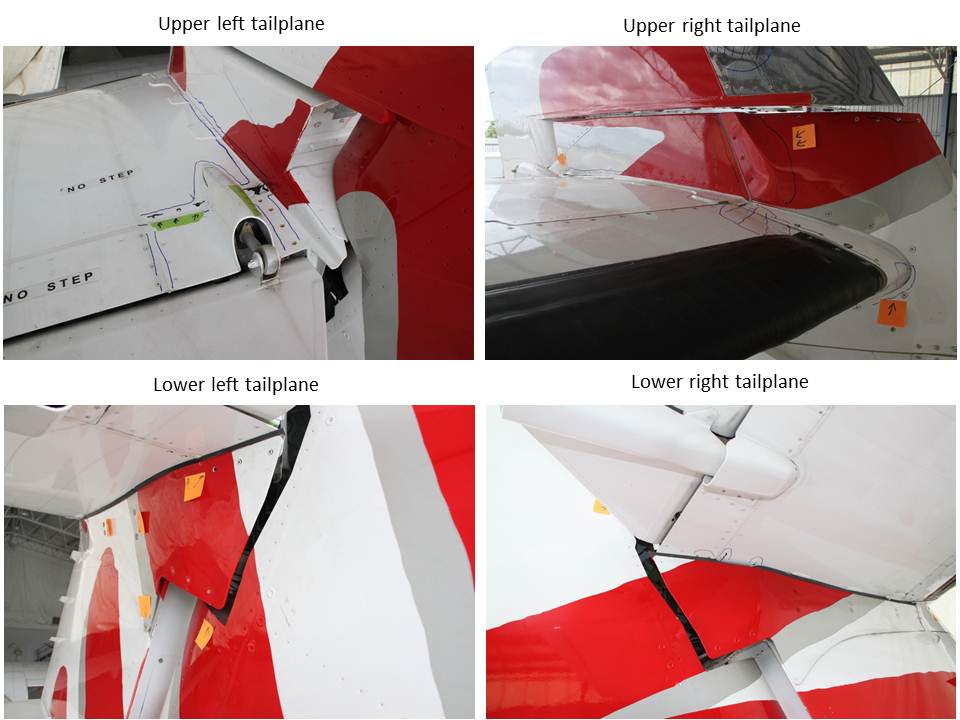Threat to ATR turboprops concerns Australian investigators.
04 May, 2017
4 min read
By joining our newsletter, you agree to our Privacy Policy


Australian air safety investigators are worried a repeat of a damaging incident that crippled a Virgin Australia ATR72 turboprop in 2014 could lead to another aircraft suffering significant structural damage.
The February 20, 2014, incident occurred when two flight crew attempting to slow the ATR 72 aircraft during descent into Sydney inadvertently applied opposing control inputs and triggered a “pitch disconnect’’. This resulted in serious damage to the aircraft’s tail and injured a senior cabin crew member.
However, the plane was initially thought to have experienced “moderate turbulence’’ and flew for several days, despite a visual inspection by an engineer, before the severe damage to the tail was detected and it was grounded on February 25.
Pitch is controlled by pilots pushing and pulling on the control column to lower or raise the aircraft’s nose. This is done by moving the horizontal panels on the aircraft’s tail, or elevators.
The elevators normally move in the same direction and in equal amounts but there is a mechanism, the pitch uncoupling mechanism, which allows them to operate independently in the event one jams.
By pushing the control columns in opposite directions, the Virgin pilots activated this mechanism and subjected the aircraft to stresses it was not designed to take.
The Australian Transport Safety Bureau continued to investigate the incident and discovered there are momentary elevator deflections during a pitch disconnect that could lead to aerodynamic loads capable of exceeding the design strength of the aircraft.
They also discovered these transient elevator deflections had not been identified when the aircraft type was originally certified.
The ATSB was sufficiently concerned about the potential impact to put out a second interim report making three recommendations.
It has asked ATR to complete an assessment of the safety issue as soon as possible to determine whether the aircraft can safely withstand those loads.
It has also asked the European regulator, EASA, and the Australia’s Civil Aviation Safety Authority to review ATR’s engineering assessment “and take immediate action if the analysis the aircraft does not have sufficient strength’’.
“Our concern is that, given the design of the ATR42 and ATR72 aircraft, opposing control inputs can result in aerodynamic loads that may exceed the design strength of the tail structure, causing significant damage," ATSB chief commissioner Greg Hood said.
"Since we identified this issue, our aeronautical and structural engineers have conducted extensive analysis based on additional data provided by ATR. The findings of that analysis, supported by an independent peer review from the UK Air Accidents Investigation Branch, confirmed our initial concerns."
ATR is continuing to conduct further engineering analysis of the issues raised by the ATSB while Australian operators of the aircraft, Toll Aviation and Virgin Australia, have taken action to minimise the chances of the situation reoccurring and to train pilots to manage it if it does.
Virgin said Friday it was confident the risk mitigation procedures it had introduced meant the aircraft remained suitable for operations.
“Safety is Virgin Australia’s number one priority, and we continue to liaise closely with the relevant regulatory bodies and the aircraft manufacturer in relation to the Australian Transport Safety Bureau’s ongoing investigation into the ATR’s pitch disconnect mechanism,’’ it said in statement emailed to AirlineRatings.
EASA’s initial response was to issue a safety information bulletin which said it did not consider the problem an unsafe condition that would warrant an Airworthiness Directive.
But Australia's Civil Aviation Safety Authority said it was closely monitoring the ATSB investigation.
“CASA continues to audit ATR aircraft operators to ensure appropriate actions have been taken to reduce the likelihood of the aircraft being mishandled in a manner similar to the incident flight,’’ it said.
“Flight procedures and pilot refresher training for the ATR aircraft operated in Australia have been amended since the event occurred.
“CASA will look carefully at the findings of the aircraft manufacturer’s engineering analysis of the issues associated with a pitch disconnect when this work is completed.
“If this analysis raises any ongoing safety issues CASA will take appropriate action. CASA will take into account any measures taken by EASA."
ATR told AirlineRatings: "In conjunction with EASA, ATR is completing the assessment of transient elevator deflections. Via the BEA, ATR continues to provide assistance to the safety investigation conducted by the ATSB."
The investigation into the Virgin incident is continuing.
Next Article
3 min read
Virgin gets nod for Tiger deal

Get the latest news and updates straight to your inbox
No spam, no hassle, no fuss, just airline news direct to you.
By joining our newsletter, you agree to our Privacy Policy
Find us on social media
Comments
No comments yet, be the first to write one.
